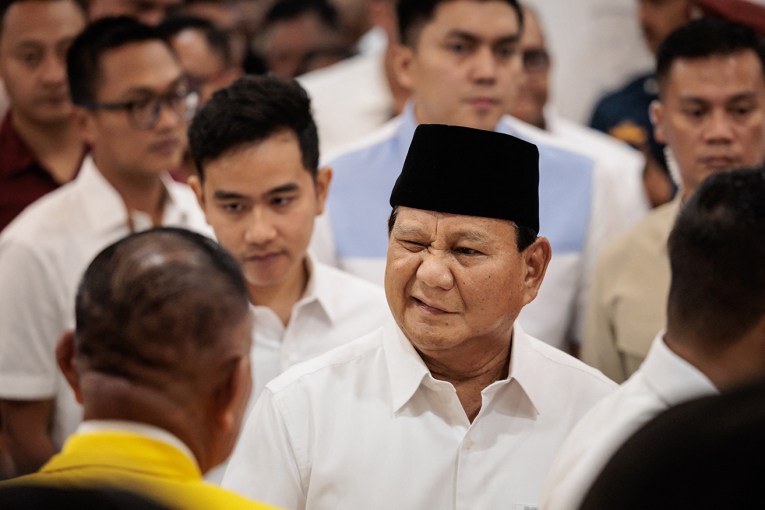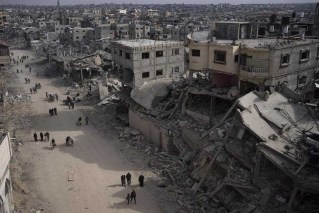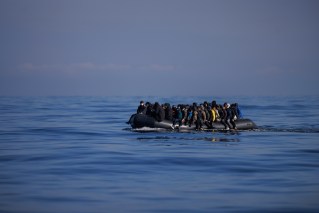Experts wait for train of bodies

Australian experts are on the ground in Ukraine waiting for a Soviet-era refrigerated train loaded with almost 200 bodies to arrive reach its final destination.
Experts are hoping to help identify victims of the MH17 crash, however the bodies are still yet to be released by rebels in the east of the country.
A team of international forensic experts are waiting for the remains of the crash victims to be released from the rebel-controlled village of Torez near the crash site.
However it’s not sure where exactly the train will be sent, with a Dutch diplomat suggesting the bodies could eventually be identified in the Netherlands.
• Dark cloud hangs over G20, AIDS conference
• Black box found, bodies removed from crash site
• Shameless selfies and theft at crash site
The train’s destination will be the subject of a negotiation between local militia, Ukrainian representatives and international experts waiting to bring them home.
Ukrainian Deputy Prime Minister Volodymyr Groysman on Sunday said 192 bodies and eight fragments had been loaded onto the train by Ukrainian emergency services.
That number includes more than 30 bodies that were taken by rebel forces to Donetsk but then returned.
Another 27 bodies and 20 fragments are to be put into another refrigerator and loaded onto a second train along with any other bodies that are recovered.
Mr Groysman told reporters in Kiev “at this point we haven’t yet received any opportunity to dispatch the (first) train”.
The deputy PM said the government would reveal where the train was going once militants allowed it to leave Torez.
“We will inform you when we get it from them,” he said through a translator.
“Then international experts and Ukrainian experts will meet that train. When we have information we will tell you when, how and where to.”
The train of dead bodies is a horrifying sight according to witnesses at the scene, who have described the smell as “absolutely overwhelming”.
“Because of the conditions they were in you need professional protective equipment to go in there,” Michael Bociurkiw, spokesman for OSCE’s monitoring mission to Ukraine, said.
“I don’t want to be too gruesome but it’s a very, very difficult scene to watch.
“Most of the body bags were intact – you could see some body parts visible, slightly torn but on the whole they were intact, but most crucially there is refrigeration finally because today is another quite warm day in this area.”
The handling of the aftermath of the crash has been widely criticised by the international community.
While campaigning in Washington for an international investigation into the matter, foreign minister Julie Bishop told media: “this is not a time to use these bodies as hostages or pawns.”
“It is an utter outrage that the site has been contaminated and that bodies have been removed and not been handed over to independent authorities.”

A supplied image obtained Sunday, July 20, 2014 of Irish ‘tiger mother’ and Catholic teacher Edel Mahady who was one of seven West Australians killed on flight MH17.
OSCE chief monitor Ertugrul Apakan told reporters Australian experts had arrived in Kiev “but there are more people we expect from Australia to come here”.
Dutch diplomat Kees van Baar said his country would lead the expert team which would identify the bodies.
“There are Australian experts in the team – they are part of the team,” he confirmed.
“If these bodies are being released they will be met by a team of international experts and they are going to be identified.
“That can be here (in Ukraine) or the Netherlands or anywhere. It will however be a joint effort by all the experts from Ukraine and all those countries involved.”
Mr van Baar revealed no next of kin had yet arrived in Ukraine.
“There’s no question as such right now of relatives arriving (because) we don’t know where the bodies will go to right now.”
It’s been suggested the train could travel to the Ukrainian-controlled city of Kharkiv.
Mr Groysman said Kharkiv was ready to receive the deceased and accommodate victims’ families “but that doesn’t mean we need to go to Kharkiv”.
He said it was unlikely the international community would allow the bodies to be sent to rebel-controlled Donetsk because it was too dangerous.
Mr Groysman said there were 200 international experts already in Ukraine including forensic experts and crash investigators.
The senior official said the government would help international experts travel to the crash site but they would be doing so at their own risk because Russia hadn’t guaranteed safe passage.
Nevertheless he insisted: “Our task is to find every body of perished victims. The ministry of emergency will continue rescue works in order to find all the remains.”
There are 800 local volunteers at the crash site.
Canberra has dispatched six foreign affairs officers, a five-member emergency response team and a number of federal police investigators.
The Australian Transport Safety Bureau is sending two investigators to support the international probe.
Almost 300 people, including 37 Australian citizens and residents, perished when Malaysia Airlines flight 17 was downed on Thursday.
-with AAP








